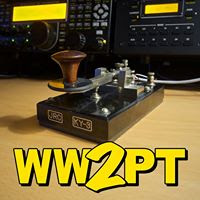Peg's Big Escape, Mars, and Halos...
Labor Day weekend's beautiful weather continues, and out comes the C8. Setup was done in intervals, while watching (and pausing, and watching, and pausing, and watching, and pausing) 'Sahara'. During one of the pauses, while I ran out to align and Linda came out to tell me to hurry, Peg managed to open the door (which we both assumed was closed all the way) and disappeared into the night. Knowing that this was the last time we'd ever see her, the finger pointing and yelling ensued. I was in little mood after this to do any observing, but I decided to leave the scope out to give me something to do while looking for Peg - or rather, listening for Peg, since it's futile to try to see a black cat at night regardless of how dark-adapted one's eyes might be.
I GOTO'd a few of my favorite Late Summer objects (M31, M33, M39, M27, Albireo), but my heart wasn't just in it. Mars was rising around 0500, I looked at it for a bit with the 8mm LVW + 2.5x Powermate (625x) but I was tired and depressed, so I decided to lay down for an hour or so. I awoke at 4am (0800), by which time Mars had disappeared into the south oak (this tree must die) so I brought in the gear and went to bed.
Once again I was plagued by halo around bright objects. For example, Vega looks something like this:

Over time I have deduced that this occurs with both the C8 and TV85, at medium to high magnifications regardless of eyepiece. If it cannot be attributed to any flaws in the optical systems, then it must be either my eyes or the fact that Lake Wallkill has some serious seeing issues. Whatever it is, it's frustrating as hell.
I've also observed that my eyes have more difficulty focusing as they become more dark adapted. Perhaps this is a normal symptom of Night Myopia???
UPDATE 050904: Peg is back! I saw her just sitting on the deck late Monday morning. I put out some food for her and left the door open. Eventually she wandered back into the house to our great relief.








